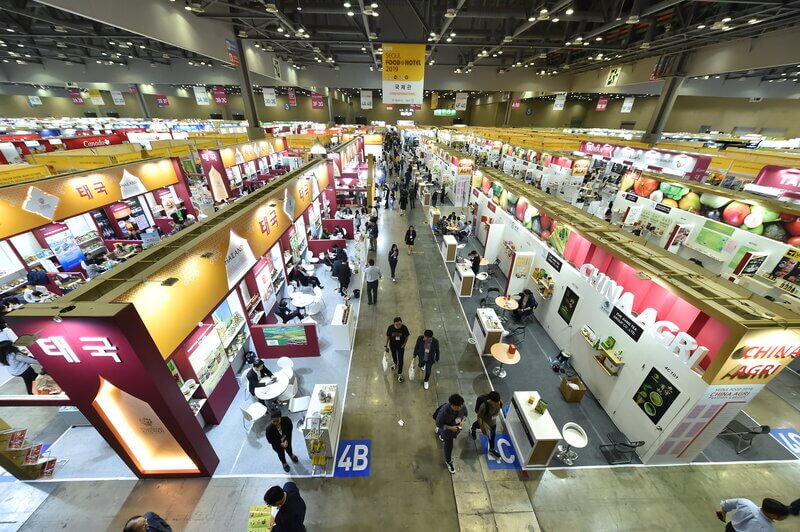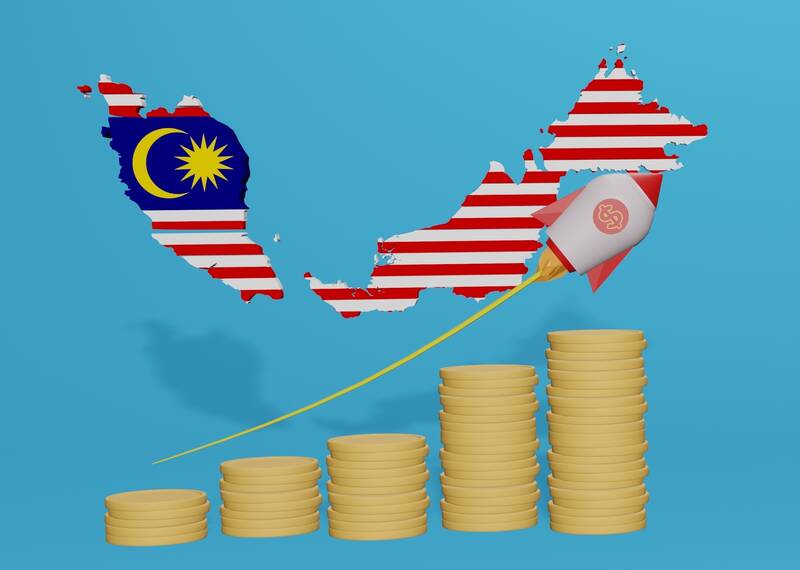Greater KL a Boon to Freight Shipping Industry
Greater KL Is Poised to Support the Freight Shipping Industry That Is Steaming through the Pandemic

The global pandemic, which began in early 2020, has changed the world in many ways. One notable difference is a far greater reliance on maritime shipping. This is clearly the primary way to move goods in the complex global supply chain that powers the world. The packing of goods into metal shipping containers has long been an essential part of modern international trade. Since the 1960s, shipping has helped accelerate globalisation and, over the years, carrying capacity has doubled while loading and unloading efforts have become much more efficient.
Now, maritime shipping is facing a new set of challenges. High demand and insufficient containers have skyrocketed the cost of shipping goods. According to the Freightos Baltic Global Container Index (FBX), the cost of container shipping almost quadrupled between November 2020 and February this year.
Industry observers attribute the surge in prices to rampant demand for China’s manufactured products, especially medical equipment, as well as consumer goods purchased by populations under some form of lockdown. This has had a knock-on effect on the need for gigantic container ships to transport vast amounts of goods from the Asian power house.
In March, the value and importance of the global shipping industry was highlighted when a container ship, nearly as long as the Empire State Building is tall, ran aground for six days in the Suez Canal in Egypt. News reports estimate that the cost of losses and damages from the blockage caused by this massive ship, known as the Ever Given, has surpassed US$1 billion. The Suez Canal handles about 12% of global trade, with about 19,000 ships passing through every year.

Malaysia is a strategic maritime hub that will benefit many freight shipping companies
A Well-Developed and Strategic Hub
In this region, Malaysia is undoubtedly a strategic maritime hub underpinned by its geographical location, with the South China Sea on one side and the Straits of Malacca on the other. Excellent connectivity and a supportive infrastructure further enhance its appeal as a suitable place for such operations. This has led to leading shipping companies such as the CMA CGM Group and Hapag-Lloyd establishing key centres in Greater Kuala Lumpur. Both companies have plans to further develop their operations here and increase their headcount.

“Malaysia was picked to be our centre of excellence for this region as we decided to build on our existing expertise here. Furthermore, this country has an advanced infrastructure with good telecommunications and digital connectivity,” says Ravindra Sahu, managing director of CMA CGM Sdn Bhd. Headquartered in Marseille, French shipping company CMA CGM established a planning unit in Malaysia in 2001. Seven years later, this planning unit was developed into a centre of excellence as the group moved to consolidate all ship-related planning activities into centres located in carefully selected countries around the world.
Meanwhile, German international shipping and container transport company Hapag-Lloyd recently picked KL to develop a regional Quality Centre, the first of its kind in Southeast Asia. Barbara Smith, managing director of Hapag-Lloyd Sdn Bhd, says the decision was premised on the strong relationship between Malaysia and Singapore, where the company’s regional headquarters is located, as well as Malaysia’s young and multilingual talent base.

“Hapag-Lloyd has already been in Malaysia for about 30 years. Building up our local office into a Quality Centre is the next stage of its development. Greater KL is a very interesting location. It makes financial sense to establish a Quality Centre here. This location also offers a talent pool where we can look for employees, if needed,” says Smith.
Smith and Sahu agree that the close proximity of Malaysian ports to major shipping lines serves the East Asian and Asia-Europe trades. Furthermore, the government’s continued investment in maritime infrastructure has developed these ports into key transhipment hubs in the region. Sahu says the creation of free trade zones across the country had effectively encouraged multinational corporations to establish operations here. These zones have increased seaborne traffic and this is an added incentive for shipping lines to call on local ports.
Developing Highly Technical Maritime Skills
The maritime industry operates in a skills based environment and it is vital that those working for global shipping companies have the necessary knowledge to perform efficiently and safely. These highly skilled workers must be able to demonstrate the critical skills required from their respective positions in a wide variety of conditions.
“Ship planning is critical to ensuring the lives and safety of the people and cargo that are carried on board our vessels. Our ship planners rely on various IT systems to ensure the stability of the vessel, optimise cargo intake and carefully plan the segregation of dangerous goods,” says Sahu.
CMA CGM’s local ship planning hub is responsible for stowage planning. This hub has increased the number of vessels that it manages from 62 in March 2019 to 225 in March this year. Sahu expects the local operation to oversee stowage planning for 257 vessels by March 2022, which is more than 50% of the vessels operated by the group.
“We prioritise safety, operational efficiency and commercial excellence by optimising the loading of the vessels in an effective manner. As we scale up to manage more vessels ahead, we will prime ourselves with more experts and capabilities as well as greater technological advancements,” he says.
In addition to in-house training, CMA CGM’s local employees are given access to the group’s digital library. Sahu says the digital library offers a variety of resources to equip employees with what they need to perform their day-to-day functions and to deepen their knowledge of the industry.
Hapag-Lloyd’s Smith says the local centre of excellence is a multilingual service centre that supports the global company’s operations such as customer service and vessel handling for a number of countries. The objective for this centre is to grow its support capabilities needed to manage a critical mass of cargo.
“It is important that things are done step by step. Right now, the Malaysian centre is supporting our operations and clients in Malaysia, Singapore and Vietnam. We have a multi-country objective for this centre, but it is important that our operations are stable and effective before we expand. We are, however, looking to grow between 10% and 15% over the next three to five years,” she adds.
CMA CGM and Hapag-Lloyd have extensive training programmes aimed at developing the technical skills of their employees. Both companies conduct online training with shipping experts around the world and have systems in place for daily operations.
“Functional experts from CMA CGM’s head office conduct training and provide guidance to local staff either during their visits here or remotely. We also collaborate with Malaysia’s maritime academy. Here, our employees can learn and experience various sailing conditions using simulators,” says Sahu.
“We have our own inbuilt system, which shows us exactly where our ships are in the world at any time. Our employees are exposed to our system as well as external systems. We invest time and money in their upskilling as we want them to be employable. Now, training is done virtually because of the circumstances. Our employees are also given on-the-job support,” says Smith.
Hapag-Lloyd has a current headcount of 160 employees in the country, whereby 80% are local talents. Smith says there are plans to hire between 20 and 30 more talents over the next 18 months. “We do see some staff attrition, which happens when the general population is quite young. When we hire, we look for the right job attitude.
I feel that attitude is a very important attribute as the talent can then grow his or her skills through our training. “While it is possible to find talent here, it is more challenging to find a suitable person that speaks a regional language besides English and Malay. If there is a need for a particular language skill, we look outside the country for the right talent.”
This is where InvestKL has been able to assist Hapag-Lloyd in its efforts to secure the right talents for its operations. InvestKL, an agency under the Ministry of International Trade and Industry (Miti), focuses on attracting and supporting Fortune 500 and Forbes 2000 multinational corporations, unicorns and fast-growing and hidden-champion-type companies in establishing their regional hubs and undertaking regional activities in Greater KL.
“Our relationship with InvestKL has been very beneficial. It is important to have a counterparty to give the right advice and guidance, especially if you are a foreign company,” says Smith.
InvestKL has also been instrumental in assisting CMA CGM with the coordination between various government bodies to include the company’s training modules into the National Occupational Skills Standards. “These training programmes are crucial to ensure that our staff continues to learn, keep up with changes and contribute to the success of our planning hub,” says Sahu. CMA CGM currently has 80 employees working as ship planners and it is looking to increase this number to 95 by year-end.
“We believe in working with local talents. We engage with institutes of higher learning that provide maritime-related courses and hope to recruit their graduates. The talents whom CMA CGM hires from local institutes would have completed their studies in maritime operations, naval architecture and nautical studies,” says Sahu.
“Graduates of these programmes would have acquired a basic understanding of ship stability, safety aspects and, to some extent, the current international conventions governing the maritime industry. This gives them a head start in the industry and facilitates their on-the-job learning.”
CMA CGM’s local planning centre currently employs one expatriate employee in a total workforce of 120.
Digital Ambitions to Drive Growth
Malaysia’s Digital Economy Blueprint has outlined a road map to develop the country into a high-value-added economy and a net exporter of home-grown technologies and digital solutions by the end of this decade.
To achieve this, RM21 billion will be invested through the National Digital Network (Jendela) over the next five years — RM1.65 billion will be invested by telecommunications companies to strengthen connectivity to the international submarine cable network until 2023; RM15 billion will be invested to roll out 5G nationwide over a period of 10 years; and between RM12 billion and RM15 billion will be invested by cloud service providers (CSPs) over the next five years.
“Further development of Malaysia’s digital economy and the infrastructure outlined in the Digital Economy Blueprint will facilitate and present opportunities for shipping and logistics companies such as the CMA CGM Group. Digitisation in the container shipping industry is definitely gaining momentum and we are at the forefront of this movement,” says Sahu.
“The various government initiatives in Malaysia to improve IT infrastructure will assist in expanding the digital connectivity that our business needs. In addition, there is a possibility that operating costs will come down if we can leverage technology for efficiencies,” he adds.
“Malaysia’s digital ambitions will definitely support the growth of its maritime industry. For example, Hapag-Lloyd is looking at establishing a small automation team in the country. This team deals very closely with our IT hub in Poland and looks into robotics and business processes that can be automated. It is very early days for this team. It is only about six months old, but it will increase in headcount if we can find suitable talent. I am pleased to note that our Malaysian employees are very enthusiastic and hardworking. They get things done,” says Smith.
“Greater KL is a cosmopolitan city, as we all know, a cultural melting pot that is poised to welcome foreign investments and peoples of the world all year round. The overall environment in and around KL is conducive for our business as there is a competent talent pool, including those digitally savvy. The local maritime universities also help to build a sustainable talent pipeline that will support our growth ambitions and plans,” says Sahu.









